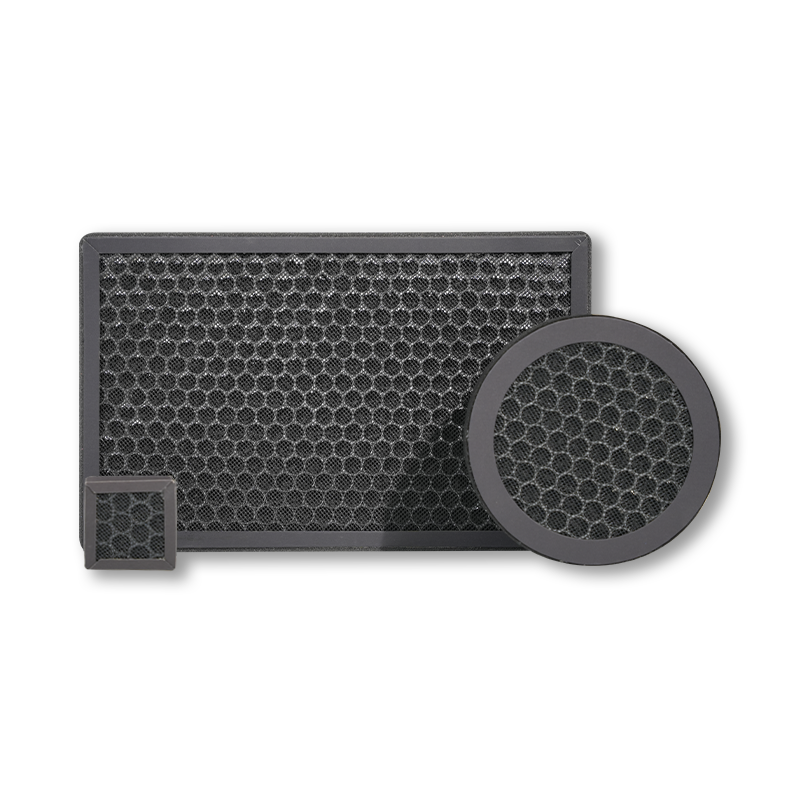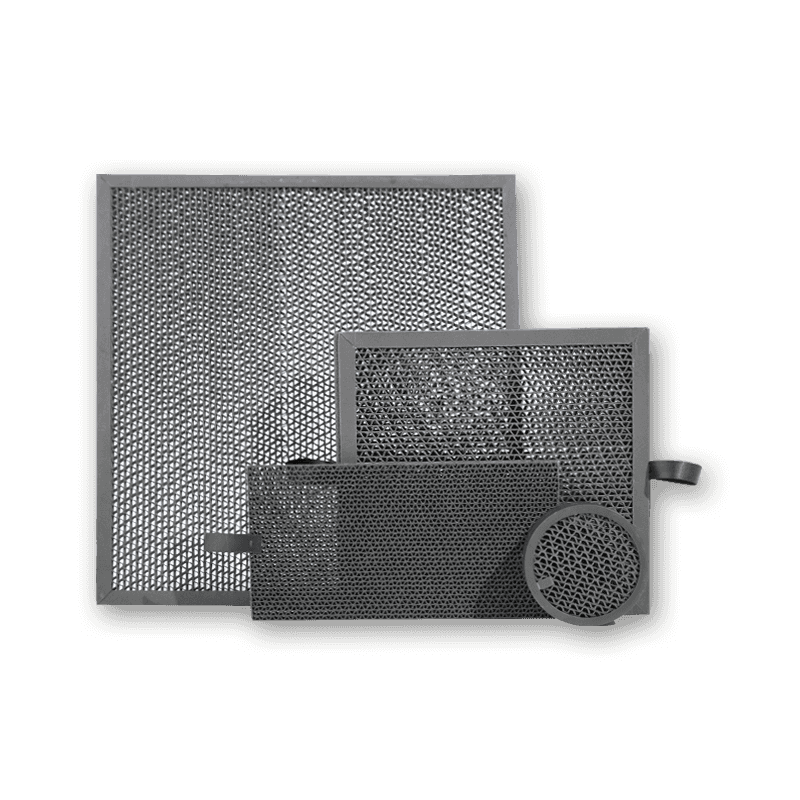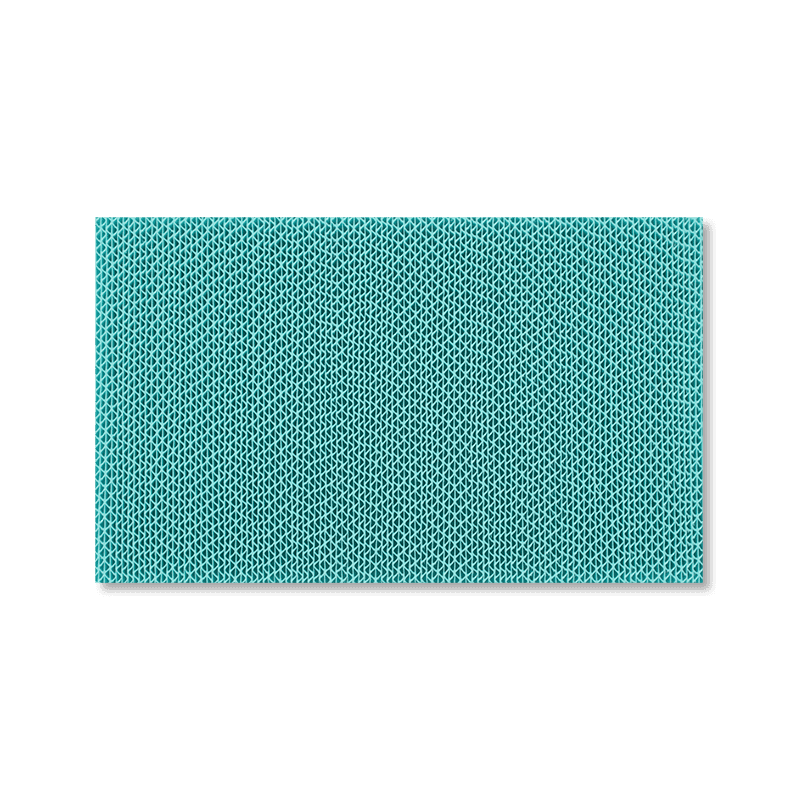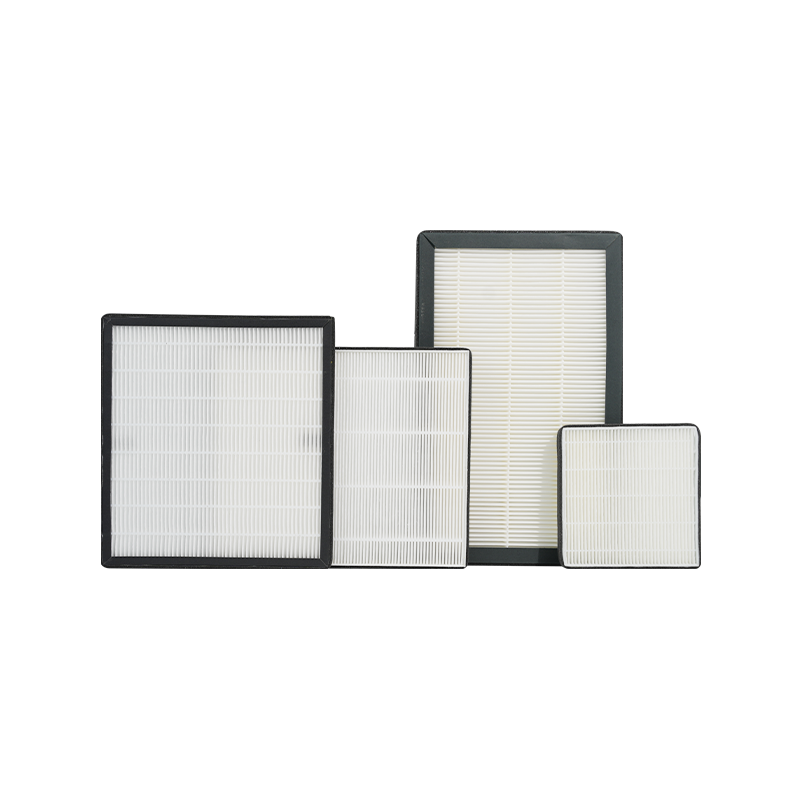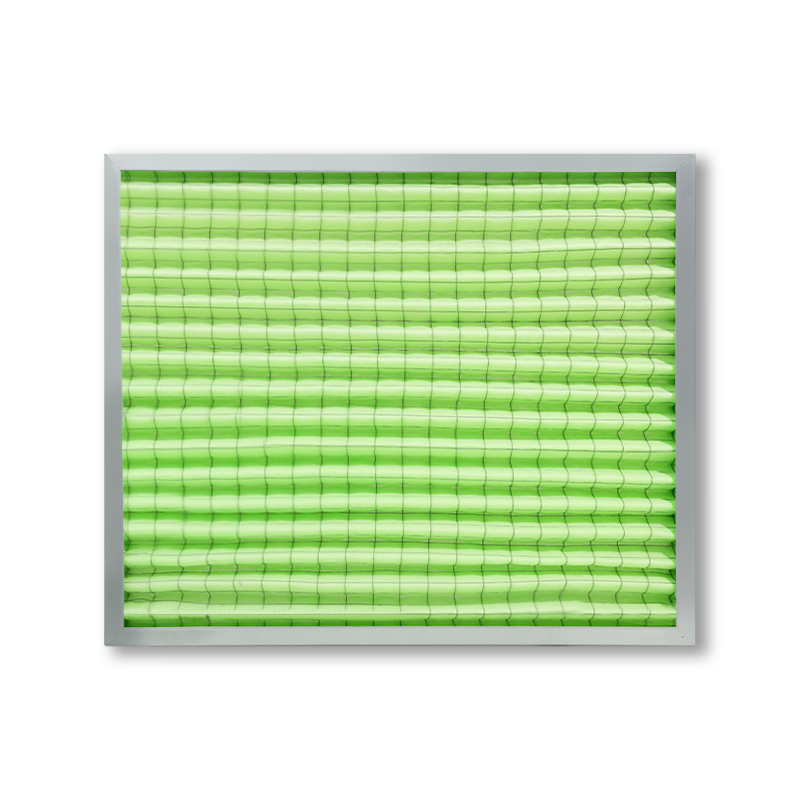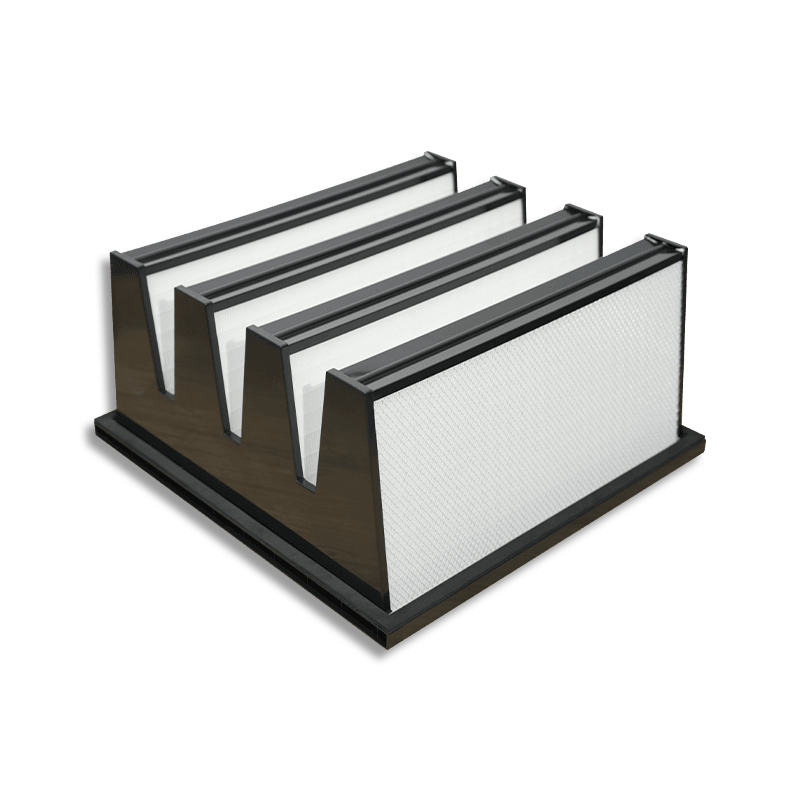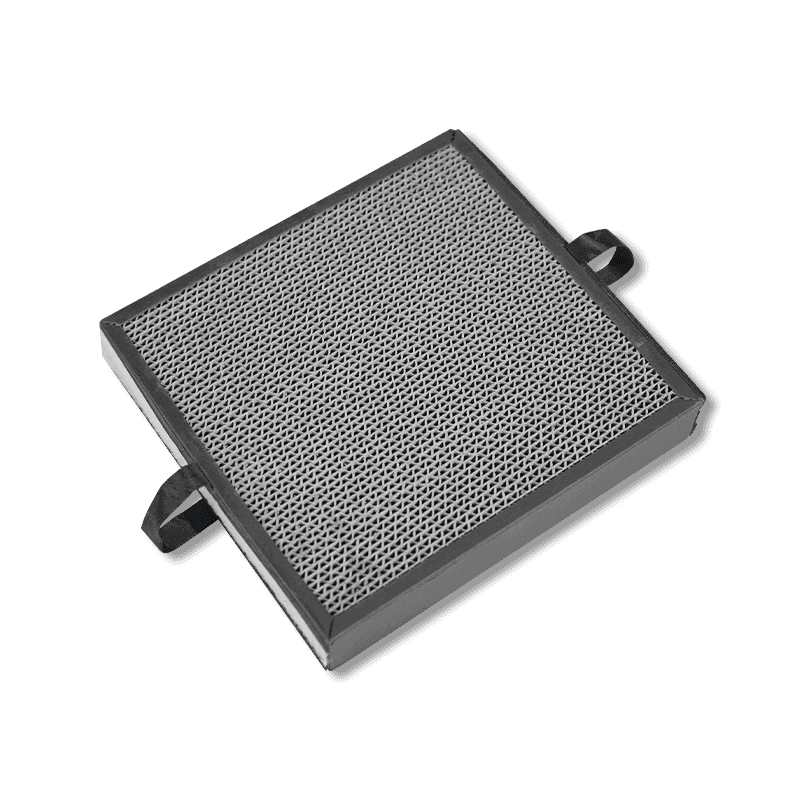Activated carbon air filters are essential air purifiers in modern homes and offices. They continuously and virtually silently purify the air of harmful substances, particularly effective at removing odors, volatile organic compounds (VOCs), and toxic gases. By utilizing a special material—activated carbon—these filters efficiently remove harmful airborne substances, providing a healthier, fresher indoor environment.
What is activated carbon?
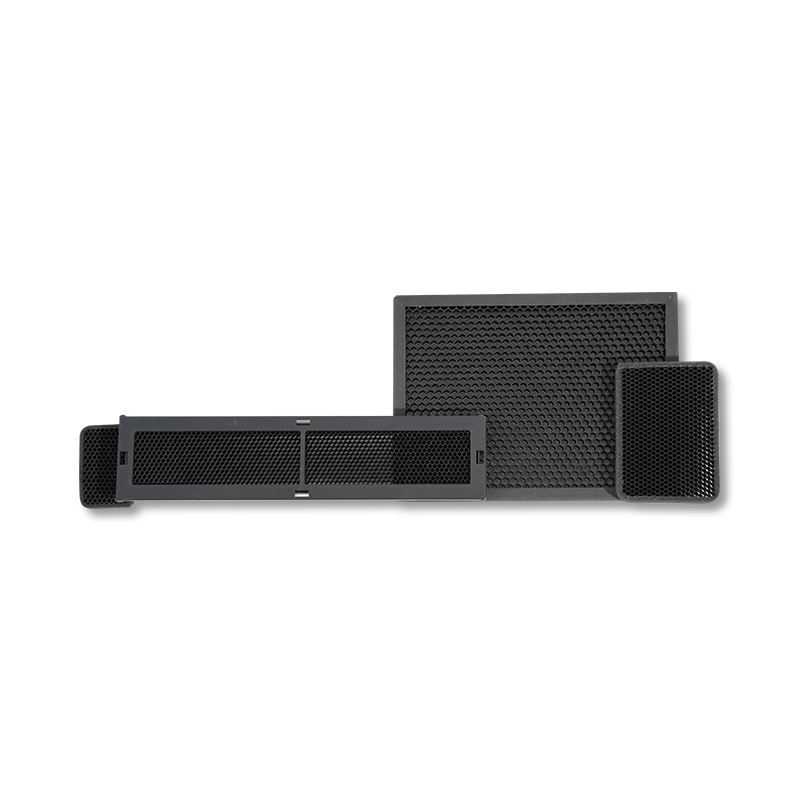
Activated carbon, also known as activated charcoal, is a highly specialized form of carbon that has been processed to create a large number of tiny pores, making it extremely porous and giving it a surface area that can range from 500 to 1500 m² per gram. This unique structure is what gives activated carbon its remarkable ability to trap, absorb, and filter out various types of molecules, making it an invaluable tool for air and water purification, industrial applications, and even medical treatments.
The Structure and Properties of Activated Carbon
The key to activated carbon's efficiency lies in its structure. When carbon is “activated,” it undergoes a process that involves heating it in the presence of gases like steam or oxygen. This process removes impurities and opens up millions of microscopic pores, greatly increasing its surface area. To put it into perspective, a single gram of activated carbon can have the surface area of several football fields combined!
Porosity and Surface Area
The surface area of activated carbon is vast because of its intricate web of micropores, mesopores, and macropores, each with different sizes and properties. The larger the surface area, the more sites there are for molecules to adhere to. These pores act like small traps for molecules, enabling activated carbon to absorb or "adsorb" a wide variety of substances.
Micropores: These are tiny pores that typically measure less than 2 nanometers in diameter. They are primarily responsible for absorbing smaller molecules like toxic gases, volatile organic compounds (VOCs), and odors.
Mesopores: Slightly larger pores (between 2 to 50 nanometers), which are suitable for absorbing larger gas molecules or liquids.
Macropores: These are the largest pores and are generally responsible for transporting larger molecules or air flow through the material.
Adsorption vs. Absorption
The difference between adsorption and absorption is important to understand when talking about activated carbon. Adsorption refers to the process where molecules adhere to the surface of a material without actually being absorbed into the material itself. In contrast, absorption would involve molecules being taken up by the material and dispersed throughout its internal structure. Activated carbon primarily works through adsorption, as its vast surface area allows molecules to stick to the outer surface of the carbon particles.
How Does Activated Carbon Work?
The adsorptive properties of activated carbon are driven by physical adsorption and chemical adsorption mechanisms:
Physical Adsorption: This is the most common process in activated carbon filtration, where molecules adhere to the carbon's surface due to weak forces called Van der Waals forces. These forces are non-specific and can affect a broad range of molecules, from larger particles like dust to smaller molecules such as gases.
Chemical Adsorption: This involves stronger, more specific chemical interactions between the molecules and the carbon surface. For example, gases like chlorine or ammonia might chemically bond with the carbon structure, forming more stable compounds.
Applications of Activated Carbon
Given its powerful adsorption properties, activated carbon has a wide range of applications across various fields. Let’s explore some key areas where activated carbon is used:
Air and Water Purification
One of the most common uses of activated carbon is in air and water filtration systems. In water purification, activated carbon is used to remove harmful chemicals, chlorine, volatile organic compounds (VOCs), and even certain heavy metals. This makes it a key component in household water filters, industrial water treatment, and even in water purification for swimming pools.
In air purification, activated carbon filters are widely used to capture odors, smoke, and harmful gases such as formaldehyde, benzene, and volatile organic compounds. Its application in air purifiers can help improve indoor air quality by eliminating unpleasant smells and reducing the presence of harmful chemical vapors.
Industrial Uses
Activated carbon plays a critical role in numerous industrial applications:
Gas Mask and Respirators: Activated carbon is used in gas masks and respirators to filter out toxic gases and vapors, protecting workers from hazardous substances in environments like factories or chemical plants.
Solvent Recovery: In industries that use solvents, activated carbon is used to recover these valuable solvents from air or liquids, helping to recycle and reduce waste.
Gold Recovery: In the mining industry, activated carbon is used to extract gold from ore through a process known as carbon-in-pulp or carbon-in-leach. The gold ions adsorb to the surface of the carbon, making it easier to recover the precious metal.
Environmental Applications
Activated carbon is also used in environmental cleanup, especially in air and water remediation projects. Its ability to absorb pollutants makes it useful for cleaning up contaminated sites, purifying air in industrial settings, or treating wastewaters in municipal treatment plants.
Air Filtration in Industrial Sites: Many industries, particularly those dealing with chemicals, use large-scale activated carbon filtration systems to purify the air before releasing it into the atmosphere, preventing the release of hazardous fumes.
Soil Remediation: Activated carbon can also be used in the treatment of contaminated soil, helping to adsorb harmful organic chemicals from the soil and making the area safer for humans and wildlife.
Main Functions and Benefits of Activated Carbon Air Filters
Activated carbon air filters have become a cornerstone in home and office air purification systems due to their versatile and effective performance in removing unwanted gases, odors, and even some larger particles from the air. These filters serve several crucial functions that directly contribute to improving indoor air quality and creating a more comfortable, healthier environment.
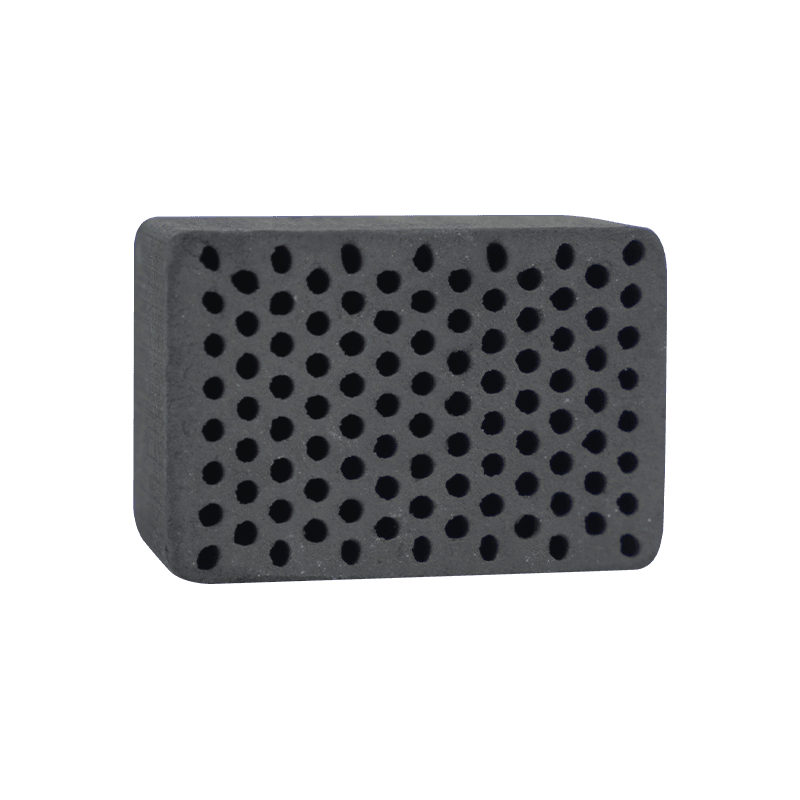
Odor Removal
One of the primary functions of activated carbon filters is odor removal. Household odors—whether they come from cooking, pets, or even mold—can make indoor spaces feel stale and unpleasant. Activated carbon filters excel at absorbing and neutralizing these odors, thanks to their unique physical properties.
How it Works:
Odor molecules like fatty acids (from food), ammonia (from pet waste), and alcohols (from smoke or cleaning products) are small and volatile, meaning they float easily in the air. These molecules have an affinity for the large surface area of activated carbon, which acts like a sponge, trapping the molecules inside its tiny pores.
The high adsorption capacity of activated carbon means that it can "lock" these odor molecules onto its surface, thereby preventing them from circulating in the air.
Practical Benefits:
In Homes with Pets: Activated carbon filters are highly effective in eliminating pet odors, which tend to linger in carpets, furniture, and air. Pets, especially cats and dogs, can introduce a variety of smells into the home, from body odor to waste-related smells.
In Homes with Smokers: For homes where smoking is frequent, activated carbon filters can help neutralize the lingering smell of tobacco smoke. The harmful chemicals in smoke, such as nicotine and tar, bind to the carbon, helping to eliminate both the odor and some of the toxic components.
In Kitchens: Cooking odors, particularly those from fried or heavily spiced foods, can linger for hours. Activated carbon absorbs the airborne particles that cause these odors, leaving the kitchen and adjacent rooms smelling fresher.
Impact on Quality of Life:
Odors can have a significant impact on comfort levels at home or in the office. Persistent bad odors can make a space feel less inviting and even affect mood. By absorbing these unwanted smells, activated carbon filters not only improve air quality but also contribute to a more pleasant living or working space.
Toxic Gas Removal
Activated carbon filters do more than just neutralize odors—they can also filter out harmful toxic gases. In many homes, especially newly renovated ones, indoor air can be filled with toxic substances that are not immediately noticeable but are harmful in the long term.
Common Toxic Gases Removed by Activated Carbon:
Formaldehyde: Often found in new furniture, cabinetry, carpets, and paints, formaldehyde is a volatile organic compound (VOC) known to be a carcinogen. It can cause respiratory irritation, headaches, and contribute to long-term health problems.
Benzene: Another VOC, commonly found in cleaning products, paints, and gasoline, benzene is linked to severe health risks, including leukemia and other forms of cancer.
Ammonia and Sulfur Dioxide: These gases are often present in homes due to cleaning products, air fresheners, and certain building materials. They can cause respiratory issues, eye irritation, and other health problems.
How Activated Carbon Works to Remove Toxic Gases:
Activated carbon’s high surface area and pore structure enable it to adsorb harmful chemicals and gases. When air containing toxic gases passes through the filter, these molecules are trapped in the pores of the carbon, preventing them from circulating in the air.
Health Benefits:
Cancer Prevention: Removing carcinogenic compounds like formaldehyde and benzene reduces the risk of developing cancers related to these chemicals. By preventing their accumulation in the indoor air, activated carbon filters help protect long-term health.
Respiratory Health: Toxic gases like ammonia and sulfur dioxide can exacerbate asthma, allergies, and other respiratory conditions. By filtering them out, activated carbon improves air quality for individuals who are sensitive to these irritants.
Long-Term Impact on Wellbeing:
Exposure to harmful gases can have cumulative, long-term effects on health. Using activated carbon filters to reduce the presence of these toxic compounds helps maintain a cleaner, safer indoor environment and reduces the risks associated with air pollution.
Improves Air Quality
While activated carbon filters are particularly effective at capturing gases and odors, they can also contribute to improving overall air quality in a space. By removing harmful pollutants and making the air more breathable, these filters provide several key benefits that go beyond simple odor control.
Difference Between Activated Carbon and HEPA Filters:
HEPA Filters are designed to trap particles like dust, pollen, pet dander, bacteria, and viruses. They are effective at purifying the air by reducing particulate pollution.
Activated Carbon Filters, on the other hand, specialize in filtering gases and odors. While they cannot filter out physical particles like a HEPA filter, they do significantly improve air quality by reducing airborne toxins that other filters might miss.
Enhanced Air Purification:
Some high-efficiency activated carbon filters are designed with additional features that allow them to capture larger particles as well. For instance, a combined HEPA and activated carbon filter will provide a more comprehensive filtration system, removing both particulates and gases, offering a more well-rounded solution for improving indoor air quality.
Ideal Environments for Activated Carbon Filters:
Newly Renovated Homes: Newly painted walls, furniture, or flooring can release VOCs and formaldehyde into the air. Activated carbon filters are particularly useful in these environments to remove these chemicals quickly and efficiently.
Offices and Commercial Spaces: In workspaces, indoor air quality can be impacted by pollutants from cleaning products, office equipment, and even the materials used in furniture. Activated carbon filters help clear the air, making it easier for employees to focus and breathe comfortably.
Overall Impact:
By reducing the concentration of toxic gases, VOCs, and other pollutants, activated carbon filters improve the overall quality of the air, leading to a healthier and more comfortable indoor environment. This is particularly important for people with allergies, asthma, or other respiratory concerns.
Noiseless and Low-Maintenance
One of the standout benefits of activated carbon air filters is their operation in near silence. Unlike traditional air purifiers that often make a noticeable hum or noise, activated carbon filters are designed to operate quietly, which is particularly beneficial in environments where peace and quiet are essential.
Why Activated Carbon Filters Are Quiet:
The filtration process in activated carbon filters doesn’t rely on high-speed fans or motors like other air purifiers. Instead, the air passes through the carbon material, where pollutants are adsorbed. This process typically doesn't require the noisy mechanical systems found in other purifiers.
Ideal for Quiet Environments:
Bedrooms: For individuals who are sensitive to noise while sleeping, activated carbon filters are perfect for maintaining air quality without disturbing sleep.
Offices: In quiet, professional settings like offices or libraries, the last thing you want is a loud appliance. Activated carbon filters offer a subtle solution for air purification without interrupting work or concentration.
Low-Maintenance Design:
Maintaining an activated carbon air filter is relatively easy. Unlike HEPA filters that need to be replaced more frequently due to their susceptibility to clogging with dust and other particles.
Maintenance Tips:
Replacing the Filter: Depending on the level of pollutants in the air, activated carbon filters should be replaced approximately every 3 to 6 months. In homes with smokers, pets, or heavy cooking, the filter may need more frequent replacement.
Simple Process: Replacing the carbon element is generally a straightforward process and doesn’t require technical expertise. Some air purifiers even include filter replacement indicators, so users can keep track of when it’s time for a change.

 English
English Español
Español 日本語
日本語
